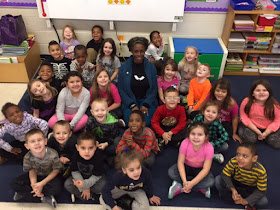By
Tommie Saylor
Kennedy
High School Principal
Today’s
question: Why should we collaborate?
When
teachers work in collaborative teams schools are more likely to see gains in
student achievement, find higher quality solutions to problems, promote
increased confidence among staff, create an environment in which teachers
support one another’s strengths and accommodate weaknesses, provide support for
new teachers, and provide all staff with access to an expanded pool of ideas,
materials, and methods (Little, 1990).
“The
single most important factor for successful school restructuring and the first
order of business for those interested in increasing the capacity of their
schools is building a collaborative internal environment.” (Eastwood &
Seashore Louis, 1992, p. 215)
Improving
schools require a collaborative culture: “without collaborative skills and
relationships it is not possible to learn and to continue to learn” (Fullan,
1993, p. 18).
When
groups, rather than individuals, are seen as the main units for implementing
curriculum, instruction, and assessment, they facilitate development of shared
purpose for student learning and collective responsibility to achieve it (Newmann
& Wehlage, 1995).
High-performing
schools promote collaborative problem solving and support professional
communities and exchanges among all staff. Teachers and staff collaborate
to remove barriers to student learning and communicate regularly with each
other about effective teaching and learning strategies. They have
regularly scheduled time to learn from one another (National Education Association,
2003).
“[High-achieving
schools] build a highly collaborative school environment where working together
to solve problems and to learn from each other become cultural norms.” (WestEd,
2000, P. 12)
“It
is imperative that professional learning be directed at improving the quality
of collaborative work.” (National Staff Development Council, 2006)
“The
key to ensuring that every child has a quality teacher is finding a way for
school systems to organize the work of qualified teachers so they can
collaborate with their colleagues in developing strong learning communities
that will sustain them as they become more accomplished teachers.” (National
Commission on Teaching and America’s Future, 2003, P. 7)
“Collaboration
and the ability to engage in collaborative action are becoming increasingly
important to the survival of the public schools. Indeed, without the
ability to collaborate with others, the prospect of truly improving schools is
not likely.” (Schlechty, 2005, P. 22)
“It
is time to end the practice of solo teaching in isolated classrooms.” (Fulton,
Yoon, & Lee, 2005)
“[Today’s
teachers must] transform their personal knowledge into a collectively built
widely shared and cohesive professional knowledge base.” (Chokshi &
Fernandez, 2004, cited in Fulton, Yoon, & Lee, 2005)
Teacher
collaboration in strong professional learning communities improves the quality
and equity of student learning, promotes discussions that are grounded in
evidence and analysis rather than opinion, and foster collective responsibility
for student success (McLaughlin & Talbert, 2006)
“Quality
teaching is not an individual accomplishment, it is the result of a
collaborative culture that empowers teachers to team up to improve student
learning beyond what any one of them can achieve alone.” (Carroll, 2009,
P. 13)
High-performing,
high-poverty schools build deep teacher collaboration that focuses on student
learning into the culture of the school. Structures and systems are set
up to ensure teachers work together rather than in isolation, and “the point of
their collaboration is to improve instruction and ensure all students learn”
(Chenoweth, 2009, p. 17)
“Collaboration
builds teacher morale” (Thomas W. Many, 2017)
The
message is simple. The days of teaching in isolation, closing your door and doing
what you do are gone. The key to success, the key to improving student learning
and teacher performance is collaboration. PLCs, mentoring, common lunch and prep
periods, co-teaching, and teacher coaches are the paths to the future of
education. We can either learn to ride this wave, or be cast upon the
shoals.
Helping
students to find their greatness. Making Kennedy the school of choice. Excellence
by design.


















































